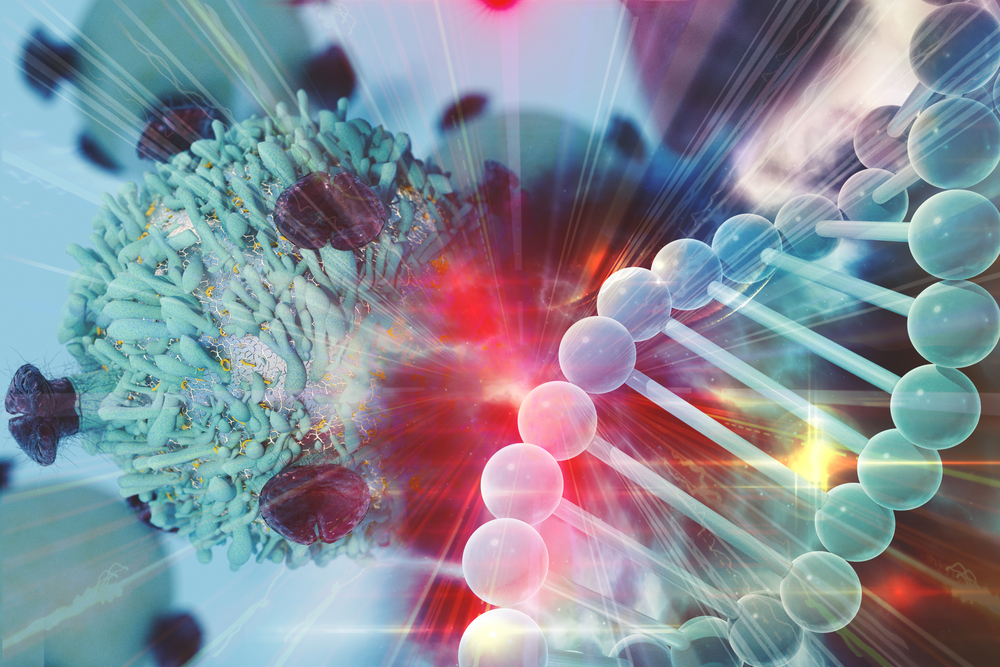Gene Therapy for CLN2 Shows Good Safety in Small Clinical Trial
Written by |

An investigational gene therapy for late infantile (CLN2) Batten disease showed a good safety profile in a small clinical trial.
The gene therapy also slowed the progression of the disease, though not to the extent of current standard-of-care treatment. Researchers are now working on more effective ways to deliver the therapy in hopes of improving its efficacy.
The findings were shared in the study, “Slowing late infantile Batten disease by direct brain parenchymal administration of a rh.10 adeno-associated virus expressing CLN2,” published in Science Translational Medicine.
Late infantile Batten disease is caused by mutations in the gene CLN2, which encodes an enzyme called TPP1. These mutations lead to a lack of functional TPP1, which causes neurological problems and ultimately results in the disease’s symptoms.
Currently, the standard-of-care treatment for Batten disease is enzyme replacement therapy. As the name suggests, such therapy involves administering functional TPP1 to “replace” the missing enzyme. While such therapy is effective, it’s not a cure — it requires lifelong administration of the enzyme.
The basic idea behind gene therapy for the disease is to deliver a non-mutated version of the CLN2 gene to a patients’ cells, thus allowing them to produce functional TPP1.
“Gene therapy is essentially a drug delivery system,” Ronald Crystal, MD, chairman of the department of genetic medicine at Weill Cornell Medicine and co-author of the study, said in a press release.
“Instead of delivering the enzyme, we’re delivering the gene for the enzyme and we’re letting the cells in the brain make the normal enzyme,” Crystal said.
Scientists from Weill Cornell Medicine and New York-Presbyterian, both in New York, developed an investigational gene therapy for Batten that delivers the CLN2 gene using a modified virus, specifically an adeno-associated virus (AAV). This virus is commonly used in gene therapies because it is easy to genetically manipulate, it can get genetic material into human cells, and it doesn’t cause diseases in people.
Now, a preliminary trial (NCT01161576, run parallel with NCT01035424) assessed the safety of this therapy, known as AAVrh.10hCLN2.
The gene therapy was administered to eight children with mild to moderate disease, as assessed by a clinical neurologic rating scale. An additional five children with severe disease, who did not meet the fairly strict inclusion criteria for the trial, also were given the therapy.
AAVrh.10hCLN2 was administered directly into the brain via burr holes, which are small holes in the skull made by a surgeon.
All 13 children given the therapy were included in a safety analysis, which indicated that AAVrh.10hCLN2 was generally well-tolerated. In the first two weeks after getting the therapy, six of the 13 children experienced severe adverse events (side effects), namely seizures, uncontrolled movements, and vomiting. In the subsequent 18 months, a total of 15 serious adverse events were reported, including vomiting, pneumonia, seizures, dyskinesia (involuntary muscle movements), and elevated levels of liver enzymes. However, none of the adverse events caused long-term disability.
In nearly all patients given the gene therapy, there was an increase in levels of antibodies that target the AAV vector. However, the levels of these antibodies were generally low.
In five children who had samples available from before and after treatment, levels of TPP1 in cerebrospinal fluid — the fluid that surrounds the brain and spinal cord — increased after treatment, by 1.3- to 2.6-fold.
Efficacy was assessed for seven of the eight children with mild to moderate disease. In comparison with 12 untreated children with Batten, who were part of a Weill Cornell natural history study, motor and language skills declined 42.4% slower in children given the gene therapy. A comparison with previously published natural history data showed similar results.
Of note, in prior studies of the enzyme replacement therapy Brineura (cerliponase alfa), by BioMarin, motor and language skills declined by about 80% slower than would be expected without treatment.
“Although AAVrh.10hCLN therapy slowed progression of [Batten] disease, … recombinant TPP1 therapy [Brineura] was more efficacious, with a greater reduction in the rate of decline of the same neurologic parameters compared to gene therapy,” the researchers wrote.
If the gene therapy could be improved, it would have theoretical advantages over the standard-of-care treatment, the researchers suggested. Most notably, gene therapy would only require one treatment, whereas enzyme replacement therapy needs to be given regularly. For example, Brineura is administered every other week.
The researchers speculated on various theoretical strategies for improving their gene therapy, including changing the dosage, altering the route of administration, and making changes to the viral vector. While the study was too small to do statistical analyses based on age, they also suggested that treating children earlier may be beneficial.
“We’ve developed more effective ways to deliver the gene therapy that we are studying now in the laboratory,” Crystal said. “We are hoping to start another clinical trial in a year. We think that if we can get more of the virus into the brain safely, we can cure the disease.”




